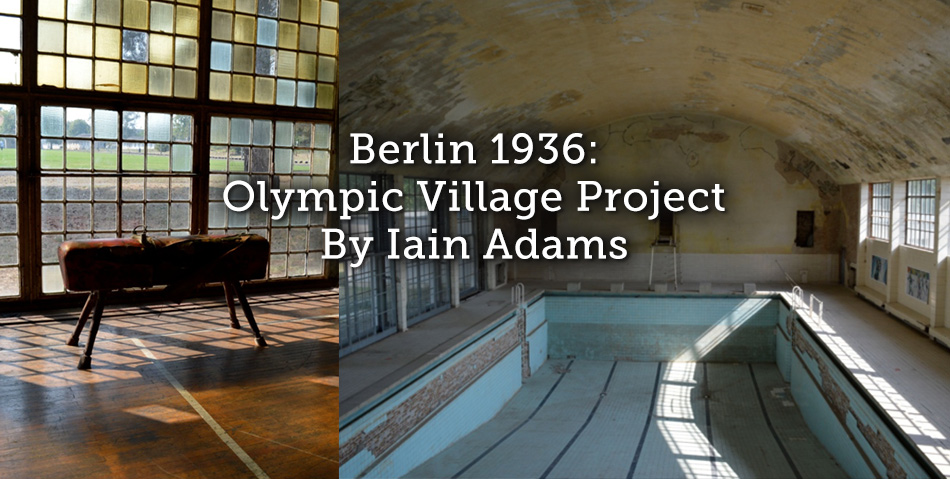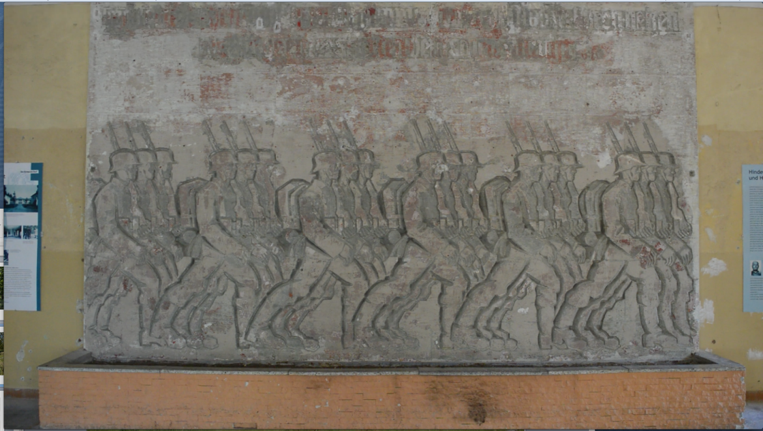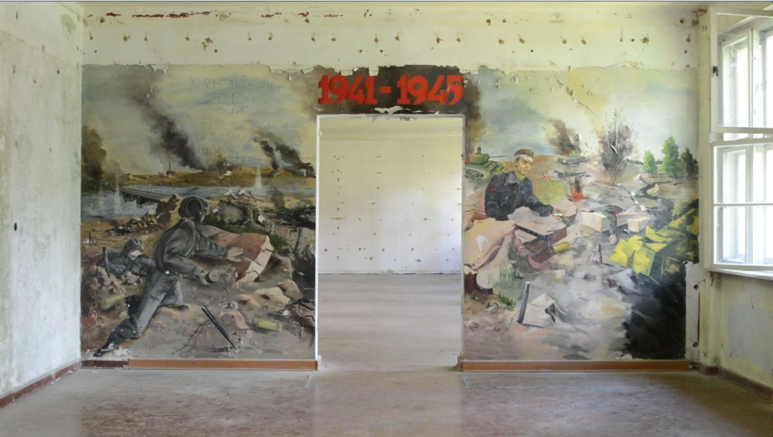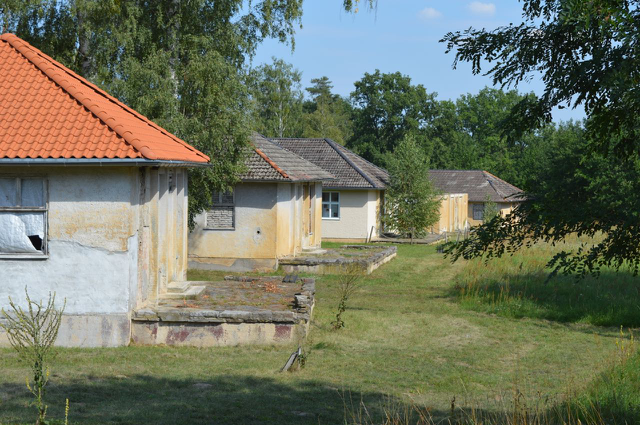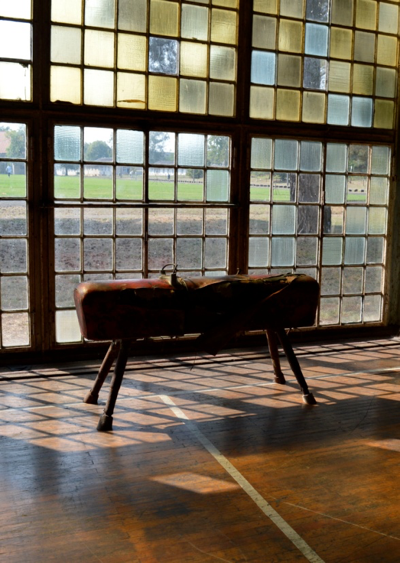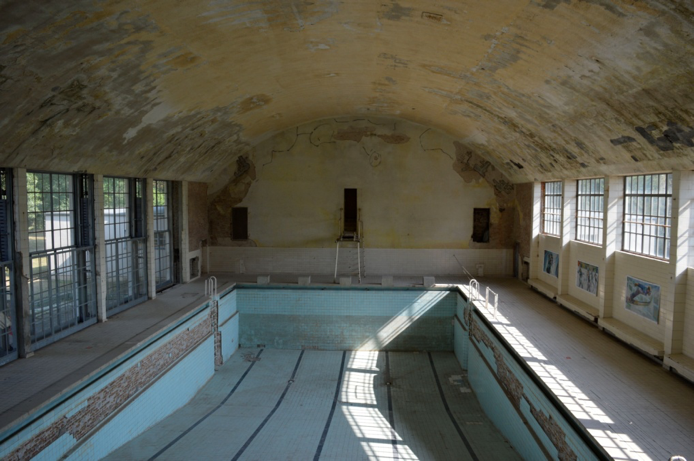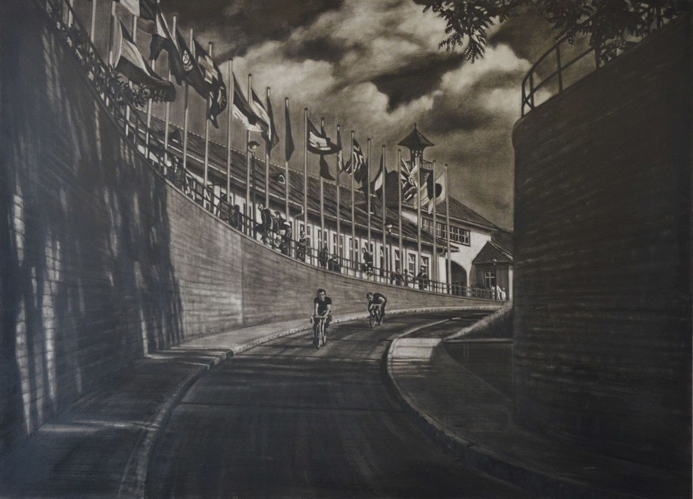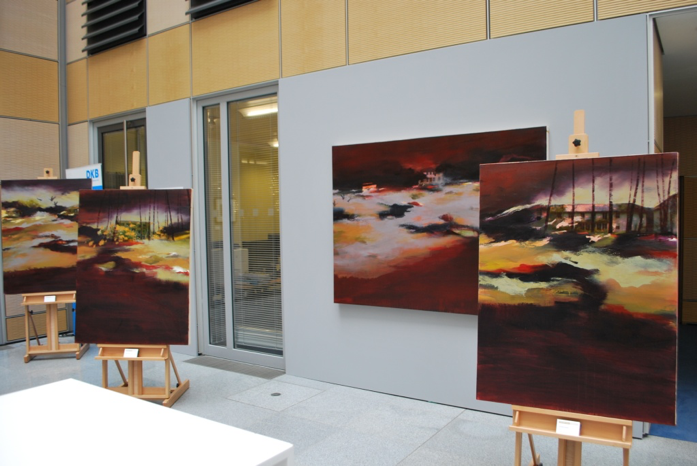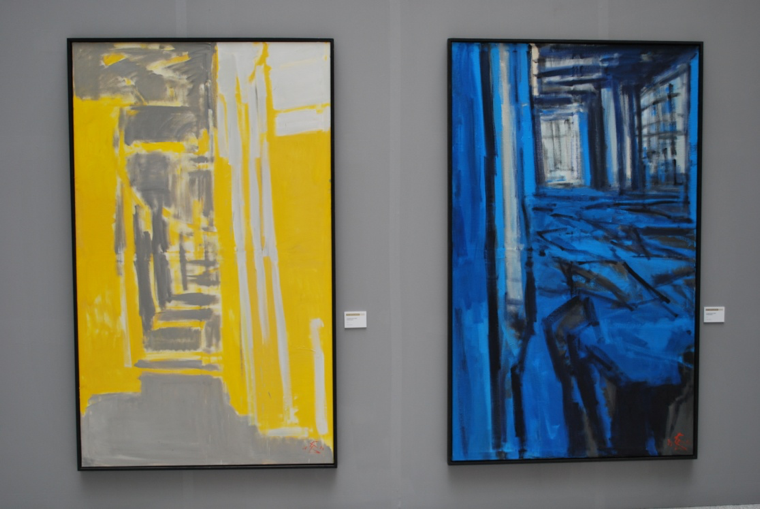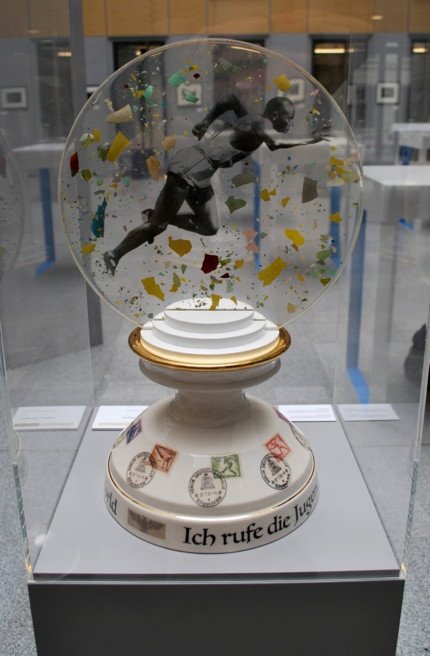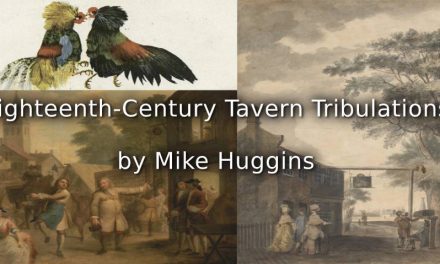The Olympiches Dorf, the accommodation centre for the athletes of the 1936 games, was the first Olympic village designed to be permanent. The 135 acre site at Elstal in Wustermark, some 14 kilometres west of the Olympiastadion, was built on Wehrmacht (German army) land. The village’s architect was Werner March, who also designed the Reichssportfeld, including the Olympiastadion. March aimed to provide a vision of a modern, mighty and peaceful Germany. Hitler visited the village just before the games and dubbed the facility ‘The Village of Peace’.
The village hosted some 4,800 male athletes and coaches from 50 countries over the two week festival whilst the female athletes and coaches were housed at the Reichssportfeld. At the Olympiches Dorf , the athletes lived in two-person rooms in 136 one- and two-story Sportlerunterkunft, apartment buildings, and ate in their own national canteens in the Bauhaus-style Speisehaus der Nationen (Restaurant of Nations) which featured 40 separate eating areas. Smaller teams shared, for example the lone Haitian ate with the Brazilians. The village was equipped with a sports hall, athletics facility, swimming pool and playing fields for training and recreation. A socio-cultural centre, the Hindenburghaus, provided a theatre/concert hall and a TV/cinema lounge where the Olympic events could be viewed live as well as movies, including propaganda films. A large bas-relief sculpture of marching German soldiers by Walter von Ruckteschell greeted the athletes at the top of the stairs as they entered the theatre. The second part of Leni Riefenstahl’s Olympia, the Fest der Schönheit contains some shots from the village.
- Nazi wall relief at the Hindenburghaus, Image courtesy David Gledhill
At the conclusion of the XI Olympiad, the site became the home of the Wehrmacht’s Infanterieschule Döberitz which remained there during the Second World War and during the conflict the Speisehaus der NatiA\onen was turned into a military hospital. The Soviet army took over the village in 1945 and demolished a number of buildings for construction materials whilst building a number of ugly apartment buildings, the Plattenbau, at the edge of the complex for married soldiers’ families. It is rumoured that the swimming facility became an interrogation centre for SMERSH and the KGB. Soviet murals were added in many places by the occupying troops although not to the same durability standards as the German art works; although Lenin still points the way forward at the back of the theatre.
- Soviet Art. Image courtesy David Gledhill
After the Soviets left in 1992, the site was abandoned and wild life and vegetation began to reclaim the village until 2005 when the publicly owned Deutsche Kreditbank (DKB) took over. The Olympiches Dorf was given to the DKB Foundation for Social Engagement which has a remit for preserving monuments, encouraging art and culture, and nature conservation.
- Sportlerunterkunft. Image courtesy David Gledhill
Until 2013, the foundation focussed on stabilising the site with specific attention being paid to the Speisehaus der Nationen, Hindenburghaus and the Sportlerunterkunft, with special attention given to the block that housed Jesse Owens. The Foundation is currently making the site more publicly accessible as a museum and planning with local authorities to develop the site as a living community. There are plans to develop part of the Speisehaus der Nationen into apartments whilst retaining the status of a protected historical monument.
- Sports Hall. Image courtesy Margaret Cahill
Pre-booked 2.5 hour tours of the Olympiches Dorf are available for a minimum of five people (olydo@dkb-stiftung.de) which includes viewing Jesse Owens room and the reconstructed Italian dining room in the Speisehaus der Nationen. This latter building served as the terrorist headquarters in the TV series Homeland, Season 5.
- Soviet interrogation centre? Image courtesy Margaret Cahill
In 2015 DKB invited four artists, Margaret Cahill, Wolf Bertram Becker, David Gledhill and Peter Lewis, to visit the site and produce work in response. The artists were allowed ‘access to all areas’ for three days and the first exhibition of the work took place at the DKB headquarters in July and August 2016 before the artworks moved to the gymnasium at the Olympiches Dorf itself for Germany’s ‘Day of Open Monument’ in September 2016.
- Work by David Gledhill displayed at the DKB exhibition, Berlin
- Work by Margaret Cahill displayed at the DKB exhibition, Berlin
- Work by Wolf Bertram Becker displayed at the DKB exhibition, Berlin
The first UK showing of the project’s exhibition, Berlin 1936: Olympic Village Project, runs on Thursday-Sundays from 18 March to 30 April at the neo:gallery23, The Market Place, Bolton, BL1 2AL. The gallery is open 11:00-17:00.
- Work by Peter Lewis displayed at the DKB exhibition, Berlin
Article © Iain Adams
Sources
https://www.a-n.co.uk/events/berlin-1936-olympic-village-project
http://www.abandonedberlin.com/2016/08/olympic-village-berlin-1936.html
http://blog.andie.org.uk/2011/10/1936-summer-olympic-village.html
http://www.dw.com/en/nazi-olympic-village-gets-new-lease-of-life/a-19487392
http://www.mirror.co.uk/news/world-news/haunting-shots-hitlers-olympic-village-8568046

